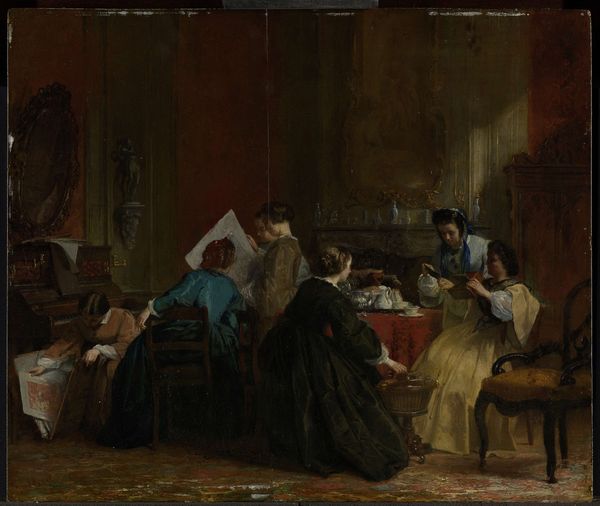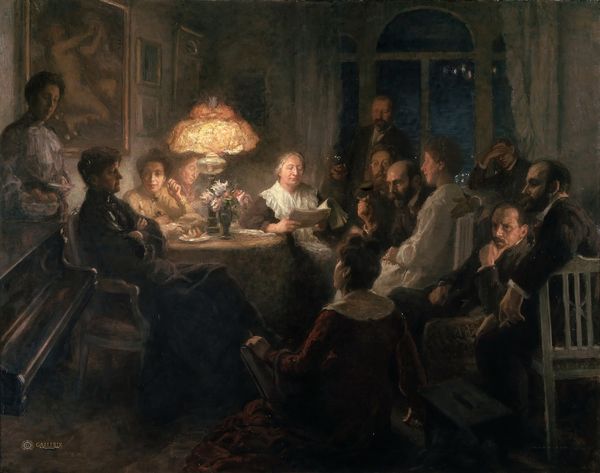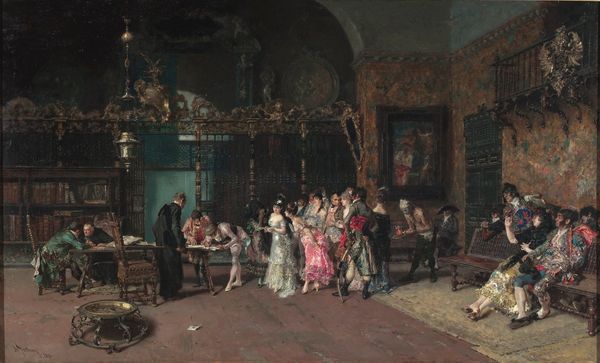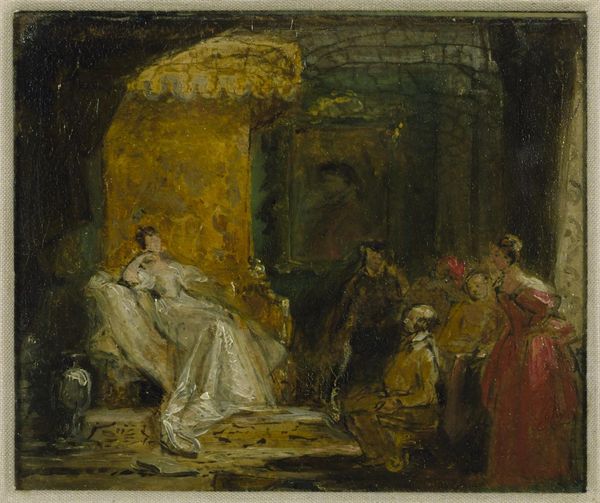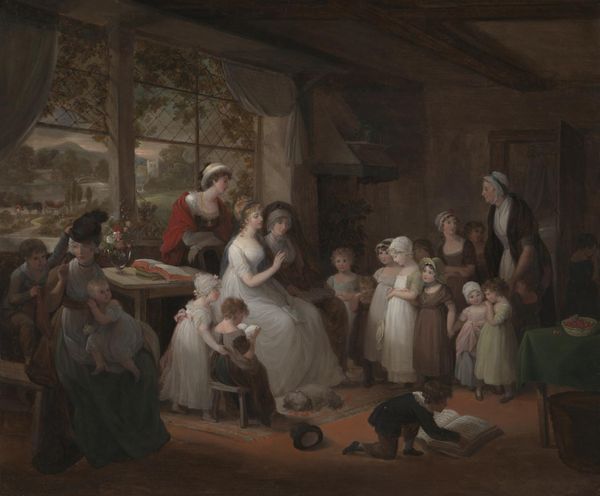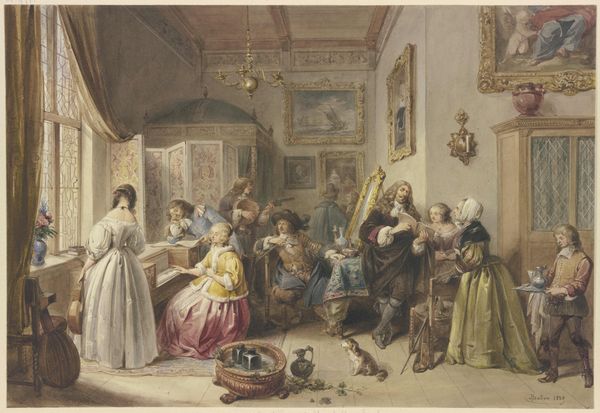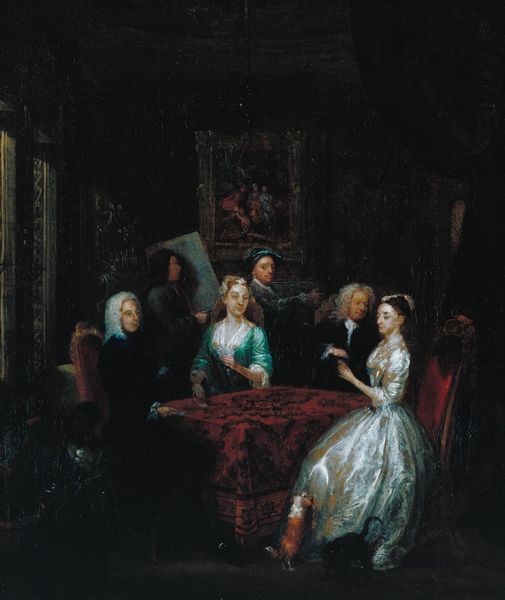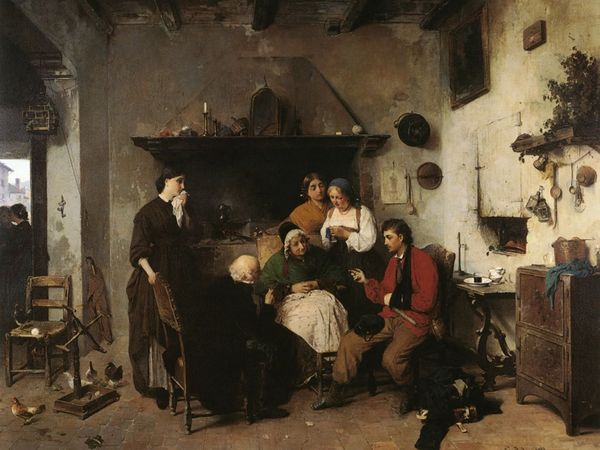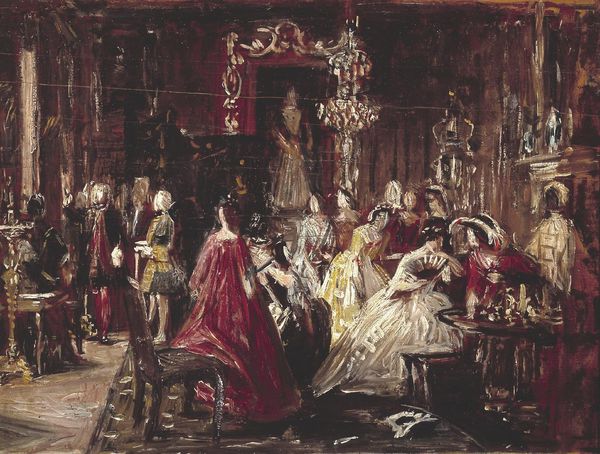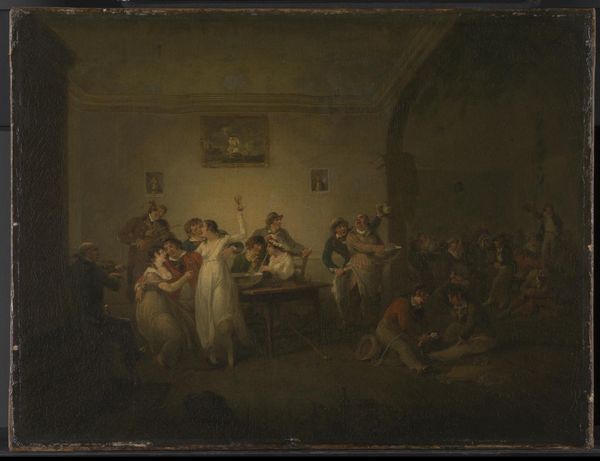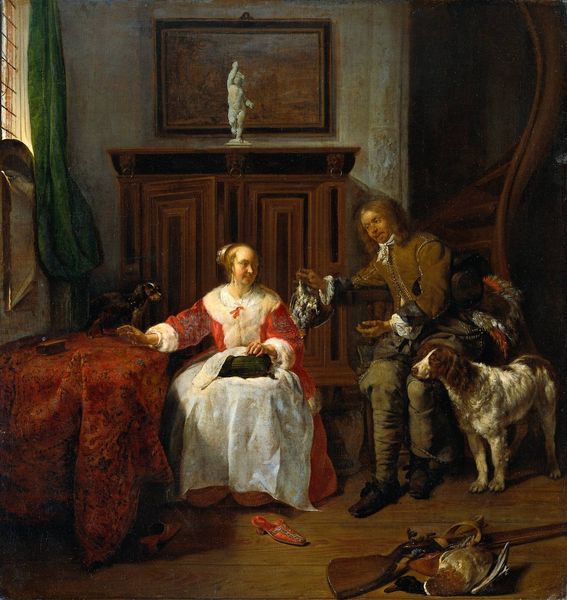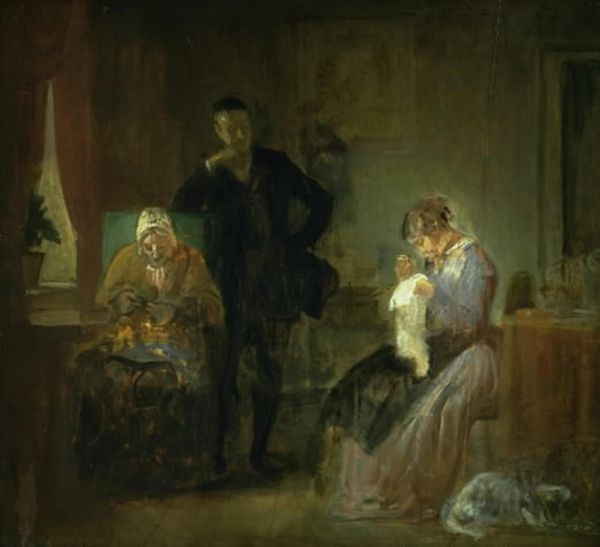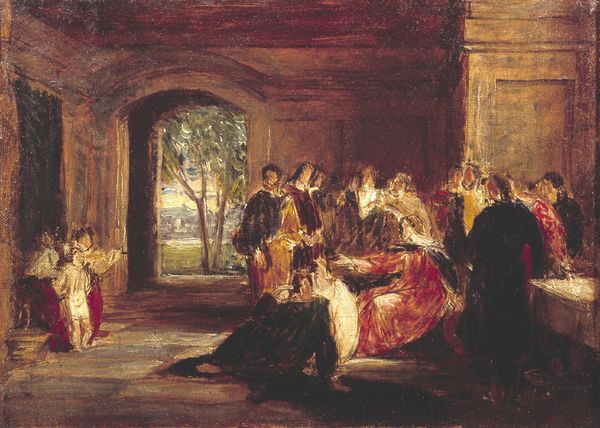
oil-paint
#
oil-paint
#
charcoal drawing
#
oil painting
#
group-portraits
#
romanticism
#
genre-painting
#
history-painting
#
charcoal
Dimensions: height 73 cm, width 101.5 cm, thickness 1.8 cm, depth 9 cm
Copyright: Rijks Museum: Open Domain
Curator: This canvas, residing here at the Rijksmuseum, is called "Historical Scene with William the Silent?" and was crafted with oil paint sometime between 1830 and 1860 by Nicolaas Pieneman. It has a rather murky quality about it. Editor: Yes, immediately striking is that muted palette—mostly browns and creams. It gives the scene a certain hushed, perhaps even somber, tone. You can almost smell the beeswax polish on the furniture. The lighting seems intentional as if he focused his energy primarily on rendering form rather than a scene bathed in color and sunlight. Curator: Precisely, it is an exercise in restraint! And given Pieneman's background, that focus on material detail isn't surprising. Consider the romanticist brushwork versus the smooth rendering of a dress, and you start to realize that everything is carefully curated by the artist. A little dog frolicking...how does it all come together? Editor: Absolutely! The brushwork dances on a razor's edge between evocative suggestion and almost careless execution, which for me, heightens its intriguing nature. Did he deliberately choose rough materials and apply these thin layers of color in order to give a material effect which mirrored historical preservation and process? And I think, the 'careless strokes' bring a raw intensity. It speaks volumes of Romanticism at that time. Curator: You see right through the artifice! Though one does have to acknowledge his attention to detail like in the subtle gleam on what seems to be a satin dress, a tiny moment of grandeur. Yet those charcoal renderings in the background, not even finished or framed as one might expect! It really begs one to question what story he really wished to reveal or conceal from our sight? Editor: He really balances the personal narrative with the power and the grandeur of "history painting," doesn’t he? So is it about William himself or about the act of history making, which often involves more than just the central hero? Maybe the artist's choice of those materials and careful depiction represents a more nuanced interpretation of labor, legacy, and power in making the history itself? Curator: It certainly feels like Pieneman intentionally leaves us grappling with those ambiguities! I feel strangely invited to enter this world in the shadows; and the quiet drama somehow amplifies this artwork. Editor: Exactly. The painting seems simple on first glance; however, if you slow down for just a moment, it slowly peels away and whispers a bit about Romanticism with muted intensity of materiality during the Dutch Golden Age. It's all quietly powerful.
Comments
No comments
Be the first to comment and join the conversation on the ultimate creative platform.
